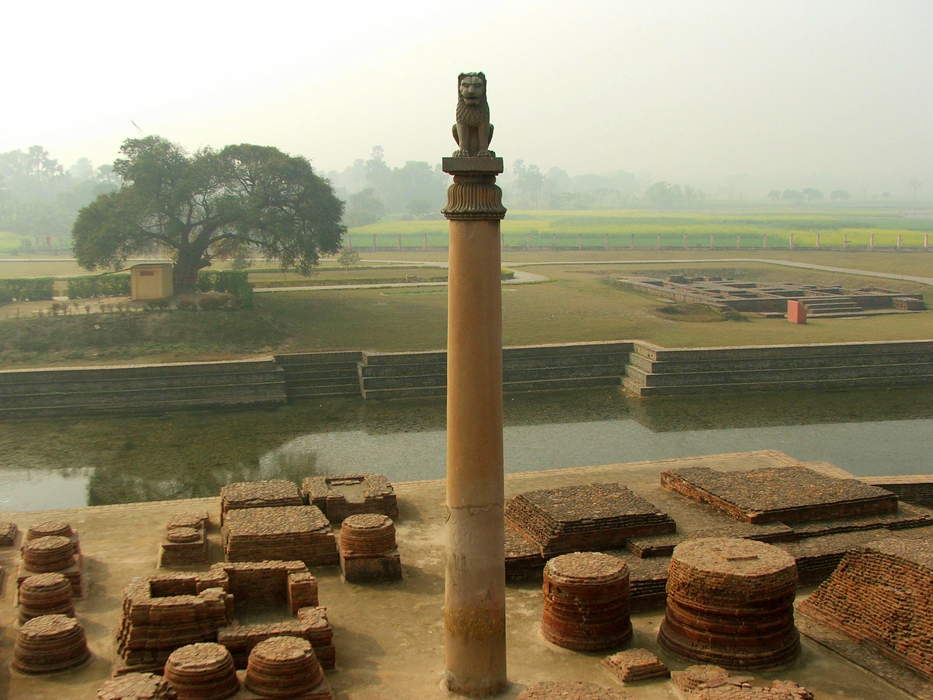Pillars of Ashoka
Series of monolithic columns on the Indian subcontinent
Pillars of Ashoka ▸ Facts ▸ Comments ▸ News ▸ Videos

The pillars of Ashoka are a series of monolithic columns dispersed throughout the Indian subcontinent, erected—or at least inscribed with edicts—by the 3rd Mauryan Emperor Ashoka the Great, who reigned from c. 268 to 232 BC. Ashoka used the expression Dhaṃma thaṃbhā, i.e. "pillars of the Dharma" to describe his own pillars. These pillars constitute important monuments of the architecture of India, most of them exhibiting the characteristic Mauryan polish. Twenty of the pillars erected by Ashoka still survive, including those with inscriptions of his edicts. Only a few with animal capitals survive of which seven complete specimens are known. Two pillars were relocated by Firuz Shah Tughlaq to Delhi. Several pillars were relocated later by Mughal Empire rulers, the animal capitals being removed. Averaging between 12 and 15 m in height, and weighing up to 50 tons each, the pillars were dragged, sometimes hundreds of miles, to where they were erected.
| 0 shares | ShareTweetSavePostSend |
You Might Like
Tension in Mirzapur: Ambedkar statue vandalised in UP village; triggers protests by localsIn Mirzapur's Chakkodhar village, outrage erupted after Dr. Bhimrao Ambedkar's statue was vandalized in a local park, which also housed statues of Gautam Buddha and the Ashoka Pillar. Locals protested..IndiaTimes - Published |
| Search this site and the web: |
